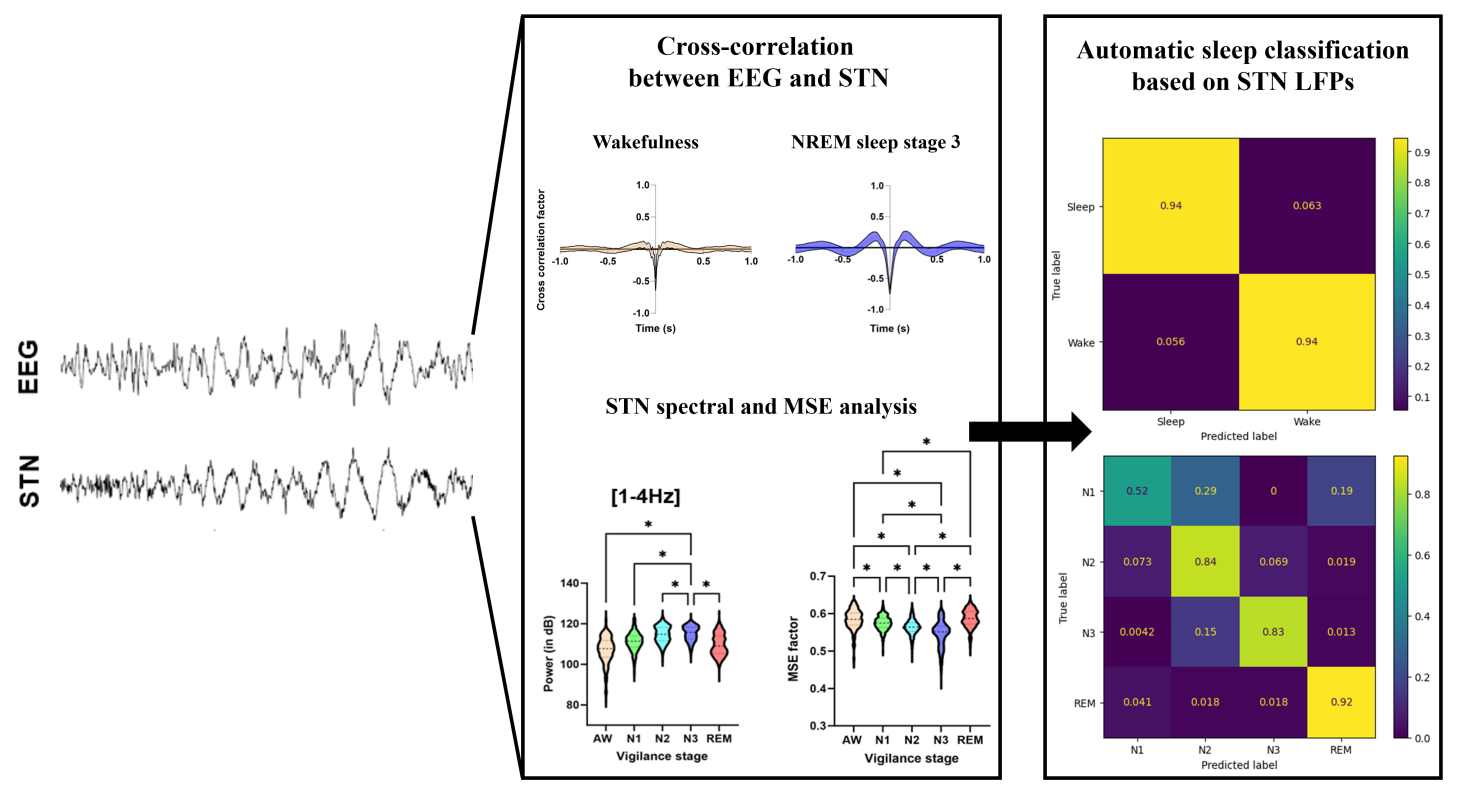- Share
- Share on Facebook
- Share on X
- Share on LinkedIn
Communiqué / Team J.Bastin, Parkinson
On June 5, 2025

Treating sleep disorders associated with Parkinson's disease using deep brain stimulation will soon be possible, thanks to work carried out by Nathan Barbe under the supervision of Brigitte Piallat, a neuroscientist at GIN, and in collaboration with Fonds Clinatec and the CHUGA.
Using an electrode connected to a neurostimulator, deep brain stimulation can significantly reduce motor symptoms in patients suffering from neurodegenerative diseases such as Parkinson's disease.
So couldn't this stimulation be used to act on other symptoms?
That's the idea behind the “DBS Sommeil” (Deep Brain Stimulation) project, which aims to treat sleep disorders using electrostimulation of the subthalamic nucleus.
“We have observed that the electrical activity of the subthalamic nucleus changes according to the stages of sleep,” explains Nathan Barbe, a doctoral student at Fonds Clinatec, ”which has enabled us to detect and differentiate them by only using a machine learning algorithm that we have developed specifically for this purpose.”
The electrical activity measured in the subthalamic nucleus can thus be used to identify the stage of sleep, but also to adapt stimulation accordingly: “The aim is to adapt electrical stimulation in the subthalamic nucleus to recover normal wakefulness or sleep activity, in other words to maintain wakefulness during the day and sleep at night”, adds the young researcher. “This is what we call 'closed-loop stimulation': it uses neuronal feedback signals recorded directly from the stimulating electrodes to deliver a specific stimulation.”
These results, published in the European Journal of Neurosciences, pave the way for further studies on Parkinson's disease to assess the relevance of subthalamic nucleus stimulation for sleep disorders in clinical applications.
“This project is particularly important because sleep disorders have a considerable impact on the quality of life of these patients, and an improvement in this condition could significantly increase their quality of life” concludes Nathan Barbe.
In the meantime, the young researcher will defend his thesis in September 2025, prepared under the supervision of Brigitte Piallat (UGA), Stephan Chabardès (CHUGA) and Milvina Billières (Fonds Clinatec).

Reference :
Toward an Automatic Classification of the Different Stages of Sleep: Exploring Patterns of Neural Activity in the Subthalamic Nucleus.
Barbe N, Connolly M, Devergnas A, Torrès N, Hervault M, Bonis M, Billères M, Chabardes S, Piallat B.
Volume 61 Issue 7, European Journal of Neuroscience, First Published online: April 13, 2025
https://doi.org/10.1111/ejn.70148
Date
- Share
- Share on Facebook
- Share on X
- Share on LinkedIn